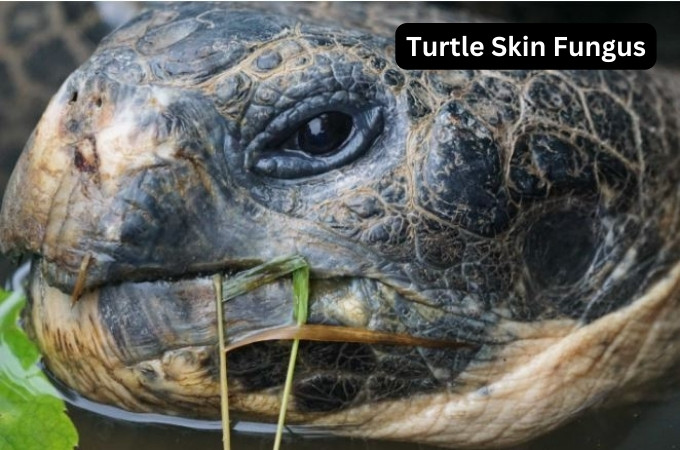Turtle Skin Fungus: reason as well as treatment | turtlevoice
Today we discuss Turtle Skin Fungus. Have you ever seen a turtle whose skin seems to be covered in an itchy, white coating? You might have thought this was just dirt or sand, but most likely it’s something more serious: turtle skin fungus. This condition can be caused by bacteria or parasites and, if not treated promptly and correctly, could cause permanent damage to your beloved reptile.
In this blog post, we will investigate the common causes of turtle skin fungus and provide some simple yet effective tips for treating it. So whether you’re looking for preventative measures or are worried about the health of your pet turtle, read on to find out more!
Overview of Turtle Skin Fungus:
Turtle skin fungus is a condition that affects the health and appearance of turtles, often caused by a variety of factors, including poor water quality, inappropriate diet, and lack of thorough cleaning practices. These factors create an optimum environment for the growth of various fungi, such as Trichophyton spp. or Fusarium spp., which could result in skin infections.
The common symptoms of turtle skin fungus include patches of discolored, white or gray, and crusty skin, often accompanied by odors and itchiness. In some instances, the affected turtle may also experience lethargy or loss of appetite. The appearance of the fungus varies depending on the species and severity of the infection.
However, it usually presents as a rapidly spreading, unsightly growth on the turtle’s skin, shell, or both, which can cause significant discomfort and potential health complications if left untreated. Seeking veterinary advice and implementing appropriate preventative measures can be crucial for keeping your turtle healthy and fungus-free.
The Science Behind the Fungus:
The fascinating world of fungus is widely misunderstood, but upon further inspection reveals itself to be a unique and complicated scientific field. What most people think of as just one organism is in fact hundreds of species that reside Everywhere from the soil to the rainforest. What makes this species so special is not only its capabilities for rapid growth and spread but also its versatility, allowing it to exist in different habitats all over the world.
This complex organism can spread through both spores and vegetative methods, making it even more fascinating to explore. To better understand how The Fungus works, we need to turn our attention toward the science behind its actions—the discoveries made by scientists have enabled us to comprehend how such a sophisticated organism operates.
topical treatments vs systemic medications:
When seeking treatment for various skin conditions, patients are faced with a variety of options, including the choice between topical treatments and systemic medications.
Topical treatments refer to creams, lotions, gels, or ointments applied directly to the affected area, whereas systemic medications are taken orally or injected, affecting the entire body. The decision between the two depends upon several factors, such as the severity of the condition, the area affected, and potential side effects.
For mild to moderate cases, topical treatments are often preferred, as they target the specific problem area and tend to have fewer side effects. However, for more severe or widespread conditions, systemic medications may be required to treat the issue from within. Patients should discuss their options with a healthcare professional to determine which treatment will best meet their needs and provide the most effective long-term solution.
Natural Remedies for Turtle Skin Fungus:
When a turtle is suffering from a skin fungus, a range of natural remedies can bring about an improvement in its condition. Dietary changes are one of the most effective ways to help manage this fungal infection.
These dietary changes can include adding vitamin C-rich foods from sources such as oranges, kiwis, and bell peppers to the diet, as well as adding more dietary fiber from sources such as split peas and legumes.
Home remedies for turtles that have skin fungus can include cleaning and debriding the affected area, keeping the water clean and maintained, giving supplemental ultraviolet light, and increasing humidity levels where necessary. With an appropriate combination of these natural treatments, Turtles with Skin fungi may begin to see significant improvements in the health of their skin.
Prevention Tips – how to keep your turtle from getting infected in the first place
Caring for a turtle comes with an array of responsibilities, and one of the most critical is ensuring that our shelled friend remains healthy and infection-free. Through mindful preventative measures, we can make their habitat safer and more conducive to their well-being. Firstly, maintaining optimal hygiene in the turtle’s environment is crucial; a clean enclosure with filtered water will minimize the risk of bacterial growth.
Additionally, a well-balanced and nutritious diet should be provided, as it strengthens their immune system and reduces the likelihood of infections. Regular monitoring of the turtle’s weight, appetite, and routine can help detect any potential health issues early, allowing for prompt intervention. Lastly, offering proper care by understanding the turtle’s specific needs, housing, and behavioral patterns will create a stress-free home for them, further boosting their immunity and lowering the risk of infections. By following these prevention tips, we can ensure our turtles remain healthy and vibrant throughout their lives.
Talking to a Professional – when to see a vet or herpetologist for treatment advice
Knowing when to seek professional assistance for our beloved pets can sometimes be a daunting task, particularly when it involves reptiles or amphibians. Timely advice from a qualified veterinarian or herpetologist can be essential in preserving their health and well-being. It’s crucial to be attentive to our pets’ behavioral changes, appearance, and any symptoms that seem out of the ordinary. For instance, if we notice issues such as lethargy, decreased appetite, skin shedding difficulties, or even aggression, it’s time to consult an expert.
By reaching out to these dedicated professionals, we take a crucial step towards ensuring our scaly friends receive the appropriate guidance and care required to live a healthy, contented life. Remember, it’s always better to err on the side of caution and consult with a specialist rather than inadvertently causing more harm by employing guesswork in matters beyond our expertise.
final word:
Turtles are fascinating animals, and learning about the ways to keep them healthy and happy is an important part of responsible pet ownership. Turtle skin fungus, or chelonian illidioplasmosis, can be a dangerous condition for turtles if left untreated. It’s caused by a variety of fungi, which can be spread through direct contact with infected turtles or their habitats.
By following proper hygiene and keeping your turtle healthy and free of stress, you can help prevent infection in the first place. If you suspect your turtle might have skin fungus, it’s best to let a professional decide upon treatment options – whether that’s topical treatments or systemic medications may vary, so always consult a licensed vet or herpetologist with any concerns.
Natural remedies like dietary changes and home cures may also be considered as supplemental treatments. Ultimately, knowledge is key to preventing Turtle Skin Fungus – stay informed and be aware of health issues that could potentially harm your reptilian companion!


